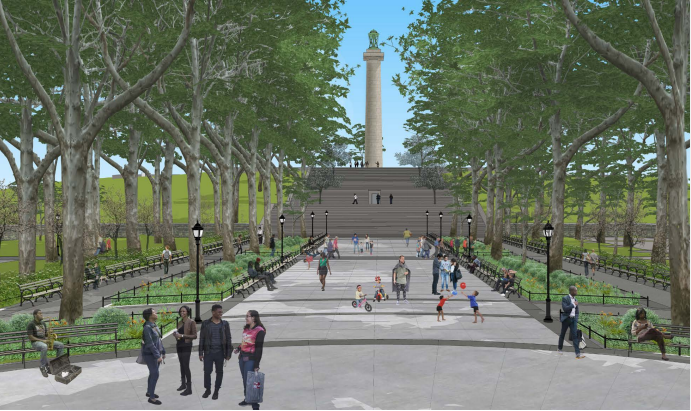FOIL fight over Fort Greene Park tree removal

There’s a legal battle over a redacted report about a redesign of Fort Greene Park. Rendering via the Landmarks Preservation Commission
The Parks Department doesn’t have to give activists a full report about its redesign of Fort Greene Park — or produce a consultant’s contract to prove the agency is exempt from Freedom of Information Law obligations, a city attorney argued in an appeals court hearing on Thursday.
The case of the Friends of Fort Greene Park versus the Parks Department hinges on whether the agency hired Nancy Owens Studio, a landscape architecture firm, as a consultant.
Elina Druker, a city Law Department attorney, told a New York State appellate court that Nancy Owens Studio acted as a Parks Department consultant when writing a report about the greenspace that calls for the removal of 58 mature trees.
